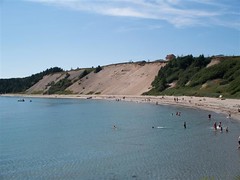
Newfoundland is known for its charm and unique personality. Faced with the rugged and often harsh environment, the early settlers called on their feelings of hope, faith, persistence, industriousness, and even humour in naming the various places in which they lived. So I decided that this summer, my project would be to get to as many of the places with unique names that I could, take pictures, and write about their stories. From that decision, this blog was born.
The first community that I focused on along the Road to the Beaches was the charming town of Happy Adventure, whose sign proudly proclaims it to be the most peaceful community in Newfoundland. I’m not sure why the sign also appears to depict a sinking ship. It was, in fact, a quiet little community of narrow roads, a simple harbour, and scattered houses. Unfortunately, as I was late and racing time to get to the other places, I didn’t have time to stay long to learn more about this lovely place, so I drove on and left it in peace.
Turning around, I came to a church with a very unique tower in front at the intersection of the routes to Happy Adventure, Sandy Cove, and Eastport. The 115 year old Holy Cross Anglican Church sits on what is called “The Neck,” a 30-acre area of land owned by the church and used as a meeting grounds for people from the three communities, containing not only the church, but a school, two cemetaries, a war memorial, and a number of community and recreational buildings.
My host at the B&B had recommend that I visit Salvage, and fortunately it was one of the unique names I had on my list. He explained that it was one of the first fishing communities in Newfoundland, but only the master fishermen (the owners) were allowed to stay year round. So, apparently, the fishermen who didn’t like being made homeless for the winter after their long, hard efforts throughout the year, would become pirates and roam the shores as far away as St. John’s throughout the colder season. There were many, many pirates that came from this area. Fortunately, I saw no signs of pirates in my brief visit, but there were certainly plenty of signs of the rich fishing history of the area. There is also the Salvage Fishermen’s Museum, which I didn’t get to view on this trip but remember as being very interesting to explore on a previous visit. It is thought to be the first community museum in Newfoundland, and is located in the oldest remaining house in the town.
Tearing myself away from Salvage just before sunset, I made it to Burnside in time to get a couple of pictures there as well. Burnside was once three communities: Squid Tickle, Holletts Tickle and Hollets Cove. (What a lovely picture the name “Squid Tickle” evokes.) The first permanent settlers made the area their home in 1885. However, in 1912, a fire destroyed much of the area. A number of years later, the residents decided to amalgamate the communities, and the local priest suggested “Burnside” as an appropriate name, as the community was rising from the ashes of the fire. The community is now growing again as many who moved away are coming back, and many who have visited now make it their summer home. Burnside is also the point to catch the ferry to St. Brendan’s. I was lucky enough to catch the Hamilton Sound just arriving at the dock during my brief visit. There is also an archaeology center there researching the history of the natives who inhabited the area up to 5000 years ago.
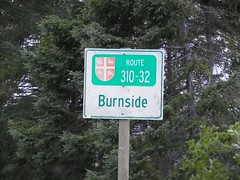
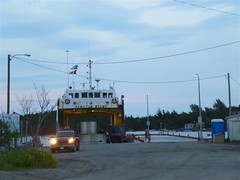
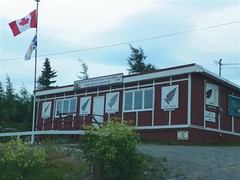
Finally it was time to head back to the lovely bed and breakfast I had booked for the night in Glovertown - the Lilac Inn B&B.
The Lilac Inn once belonged to a sea captain who built it for his second wife, Mary. It was later bought by the Tate family, and the two sisters who lived there decreed that it not be sold before their death. Sadly, they took ill and went to a nursing home, and the house was boarded up and abandoned for a number of years until it was bought by the Churchills who fixed it up and opened it as the first B&B in Glovertown. Two of the rooms are named after the sisters, Edith and Sarah, and the third is named Susie, after the maid of the sea captain who had lived in the house until she was 93, and resided in the attic, as it was the largest room in the house.
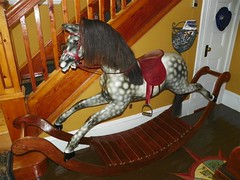
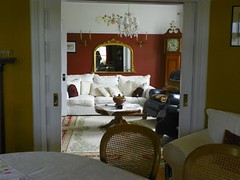
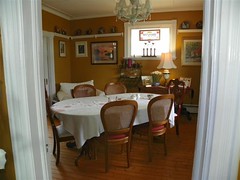
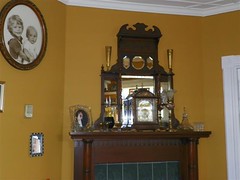
The current owner, a very friendly and helpful man by the name of Keith, came here from England with his son who had met a girl from Glovertown at university in England. They decided to move here, and he asked his father to come with him. Keith settled in, made friends, and they decided that he needed to have a Newfoundland wife, so they started a concerted effort to introduce him to anyone who carried key Newfoundland characteristics, like being a good hunter or able to bake a wonderful rhubarb pie. Finally, they found a girl named Eileen from Gander, and it was a match. They had a lovely ceremony in the garden after a procession by boat, and spent their wedding night at the Lilac Inn. They fell in love with it, and when his new wife said she’d love to live there, he offered to buy it. It was a few years before it became available, but as soon as it did, he bought it and continued the tradition of running it as a bed and breakfast, and is loving every minute of it. He appreciated the irony of the fact that it was built by the sea captain for his new wife, and then so many years later bought by another man for his new wife.

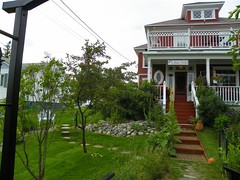
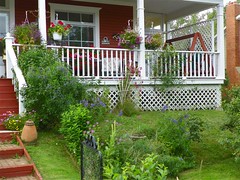
The B&B is a lovely with beautiful gardens, and a cozy veranda. Antiques and charming knickknacks abound throughout the house, including the large rocking horse that greets you at the main entrance. The host was very friendly and helpful, and full of information about the area. The room was very nicely done, and quiet, and the internet worked well and was secure. Edith’s Room had an ensuite bathroom, which was very convenient, but small, and the shower was tiny. It only had two very small shelves, which barely held a small bottle each, so I had to turn off the shower and open the door to reach for anything else I needed, which was a bit of an inconvenience. Any visitors should note, too, that there are a LOT of stairs, even just getting to the main door, and then more to the rooms, so be sure to pack light. (That’s a skill I have yet to master!)
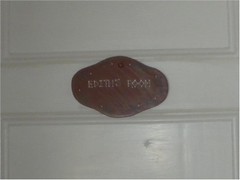
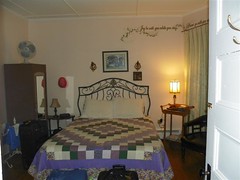
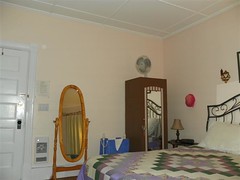
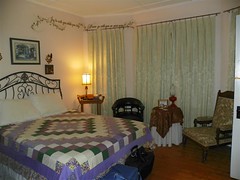
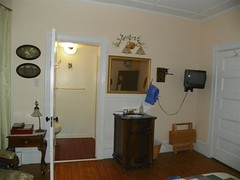



Glovertown is a growing town with approximately 40 new housing starts this year. It is a great place to visit, as attested by the man who is responsible for the Fry Foundation. He had visited an uncle in the town as a child and fell in love with it. Now, as an adult, he comes back with his own grandchildren to share with them his love for the area, and he has formed the Fry Foundation to fund development in the area, such as for the arts center and the Ken Diamond Park. He was also responsible for building a trail to a lookout over the town.
One place that I was recommended to visit in Glovertown was a restaurant called “Whimsicals.” My host described it as being three fishing stages put together at different levels and turned into a unique and character-filled restaurant. It also includes a small shop of handicrafts and giftware from the area. Unfortunately, I didn’t get to stop in while I was there, but it did sound like a wonderful place to check out.
If you like to sit and relax on a sandy beach, then you’ll find this route to be very appealing. However, be sure and explore the history and scenery of the area as well. There’s a lot to be Found in Newfoundland along the Road to the Beaches.

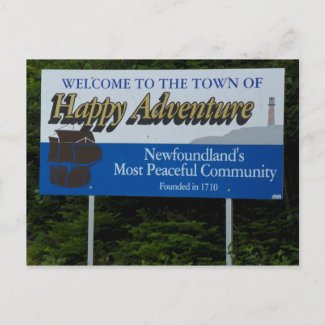
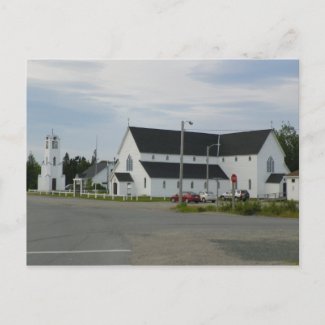
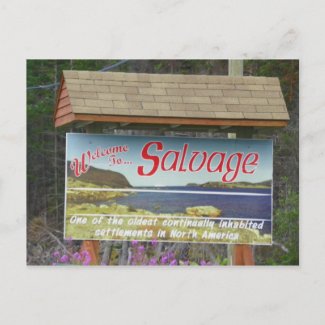
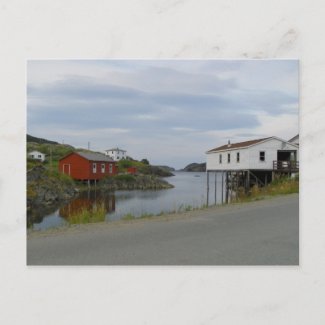
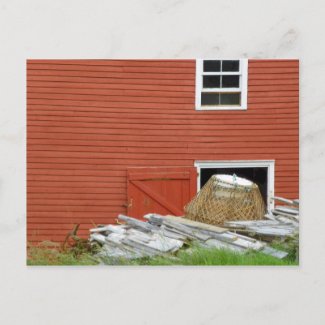

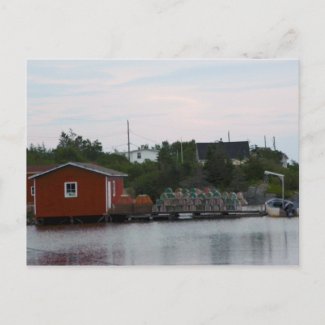
No comments:
Post a Comment
Please share your comments on this post or your interest in Newfoundland